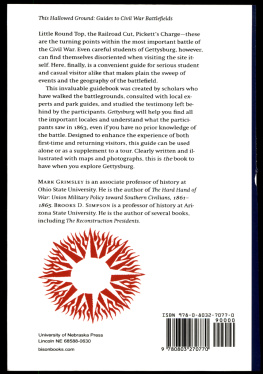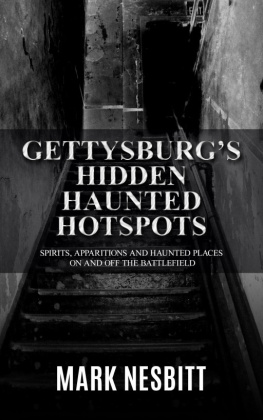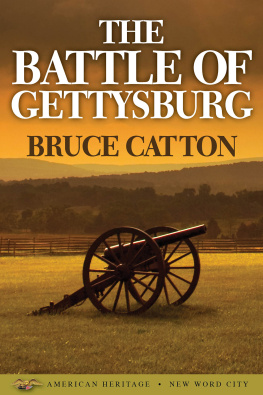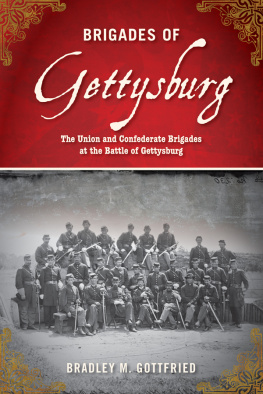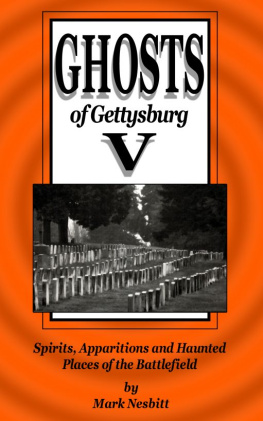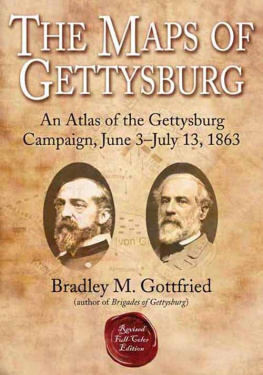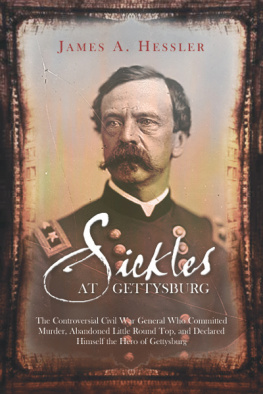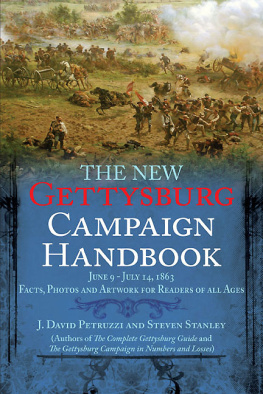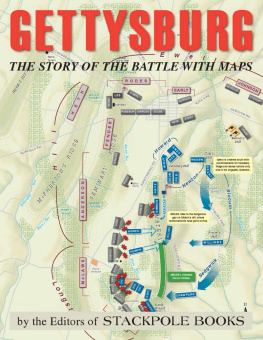
This Hallowed Ground: Guides to Civil War Battlefields
SERIES EDITORS
Brooks D. Simpson
Arizona State University
Mark Grimsley
The Ohio State University
Steven E. Woodworth
Texas Christian University

l999 by the University of Nebraska Press. All rights reserved. The paper in this book meets the minimum requirements of American National Standard for Information SciencesPermanence of Paper for Printed Library Materials, ANSI Z39481984.
Library of Congress Cataloging in Publication Data Grimsley, Mark.
Gettysburg: a battlefield guide / Mark Grimsley and Brooks D. Simpson: Cartography by Christopher L. Brest and Marcia McLean.
p.cm. - (This hallowed ground: guides to Civil War battlefields. Includes bibliographical references. ISBN 0-8032-7077-1 (pbk.: alk. paper)
ISBN -13: 978-0-8032-7465-5 (electronic: e-pub)
ISBN -13: 978-0-8032-7466-2 (electronic: e-mobi)
1. Gettysburg National Military Park (Pa.) - Guidebooks. 2. Gettysburg (Pa.), Battle of, 1863. 1. Simpson, Brooks D. II. Title. III. Series: This hallowed ground.
E 475.56G75 1999 9174842dc21 99-12067 CIP
The publisher does not have any control over and does not assume any responsibility for author or third-party websites or their content.
Acknowledgments
In preparing this guide, we received assistance from friends and colleagues who share our interest in battlefield interpretation and Gettysburg itself. Carol Reardon offered good advice at an early stage; several anonymous readers reviewed the manuscript for the University of Nebraska Press; and our series coeditor, Steven E. Woodworth, gave it a field test and came up with several good suggestions. Among those people who walked the battlefield with us, Wayne Motts and Bill Odom contributed various insights and listened to our assessments. Others, including Michael Burlingame, Anne Berlin, and numerous Army and Marine Corps officers who were part of several battlefield walks, served as a helpful audience. Members of the Gettysburg Discussion Group answered our queries on several topics; so did Tom Desjardin and Tim Smith, each of whom gave generously of their expertise. Thomas Goss checked mileage during one field test; Jean Berlin assisted in refining descriptions and directions; John Peterson helped cool us off after long days on the battlefield with a few beers at the Farnsworth House Tavern.
Christopher L. Brest prepared the excellent maps that accompany the text. We would also like to extend our appreciation to Ron McLean of The Ohio State. University for his extensive cartographical assistance. Finally, we want to acknowledge the patience and sacrifice of Elaine M. Grimsley, who weathered not one but three serious basement floods while her husband was off traipsing the fields of Gettysburg.
For both authors of this guide, Gettysburg is a special place. Even after our many visits, we recall what happened there with a sense of awe. In preparing this guide, we have sought to help visitors gain a better grasp of the hows and whys of the fighting. But we also hope that their explorations of Gettysburg will deepen their emotional understanding of a tragic, transcendent moment in American history.
The illustrations reproduced in this book first appeared in Battles and Leaders of the Civil War , ed. Robert Underwood Johnson and Clarence Clough Buel, 4 vols. (New York: Century Co., 188788). The volume and page number from which each illustration was taken are indicated at the end of each caption.
For Ed Bearss who makes battlefields come alive
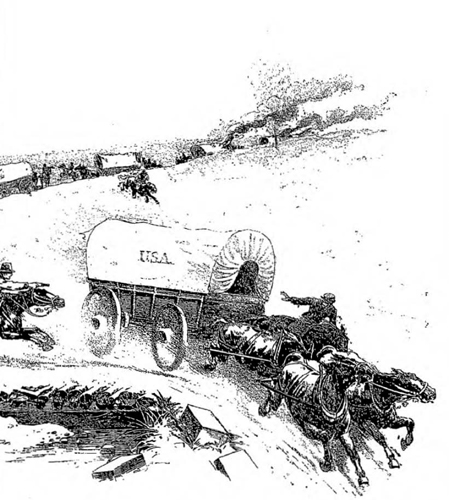
Raid upon a Union baggage train by Stuarts cavalry. From a wartime sketch, 2:501
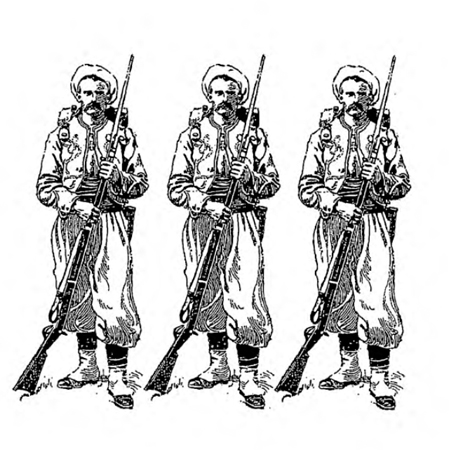
Uniform of the 146th New York Regiment. 3:315
Introduction
The battle of Gettysburg has captured the imagination of Americans as has no other battle in the American Civil War. Its dramatic narrative and human interest stories have the stuff of prize-winning novels and epic movies; it helped inspire Abraham Lincoln to deliver one of the most memorable addresses in the English language. Historians might question whether it indeed deserves to be labeled the turning point of the war or the Confederacys high-water mark, but these debates do not detract from the fascination many Americans have for this battle.
Not surprisingly, more people visit Gettysburg than any other Civil War battlefield. They drive out to McPhersons Ridge, where the opening skirmish evolved into a battle on July 1; walk along the slopes of Little Round Top, site of a heroic struggle on July 2; and view the Union position on Cemetery Ridge, where a final Confederate assault on July 3 failed to break the Federal lines. Devils Den, the Wheatfield, the Peach Orchard, Cemetery Hilleven lesser-known Barlows Knoll and Culps Hillremain embedded in memory, as does the formative impact of terrain on the battle. It was because of the nature of the ground that Union commanders chose to make their stand south of the small Pennsylvania town; it was because of the sanguinary nature of the contest that Lincoln later christened it as this hallowed ground.
It is to see that ground that people come to Gettysburg; this guide represents an effort to help them understand what they see. It seeks to fill a niche between the overviews of the battle available in pamphlets and handouts and the rather detailed treatment of battle terrain and action offered in several volumes, exemplified by the series of U.S. Army War College guides. It is designed for people who are willing to invest a day in examining the battlefield with some care in order to understand how the battle unfolded and why it turned out as it did. Descriptions and maps outline the appearance of the terrain in 1863, the positions of the contending forces, and the action in various areas on the field. Although the guide is not an exhaustive treatment of the three days of combat, it explores the major (and some of the not-so-major) engagements that made up the battle of Gettysburg. Finally, although users of the guide might benefit from examining it before visiting the battlefield, such preparation is not essential: one can pick up the guide, drive out to the battlefield, and begin a tour immediately.
The main tour can be completed in approximately six hours: two hours for July 1, three hours for July 2, and one hour for Cemetery Ridge on July 3. Also included are a rather more detailed treatment of the struggle in the Wheatfield, a walking tour of the Confederates July 3 assault on Cemetery Ridge, and excursions to the two cavalry battlefields. Short summaries of the campaign and of each days operations help to establish context. At the end of the guide are abbreviated Orders of Battle listing the units present on the battlefield, a discussion of tactics and weaponry, and a bibliography for further reading.
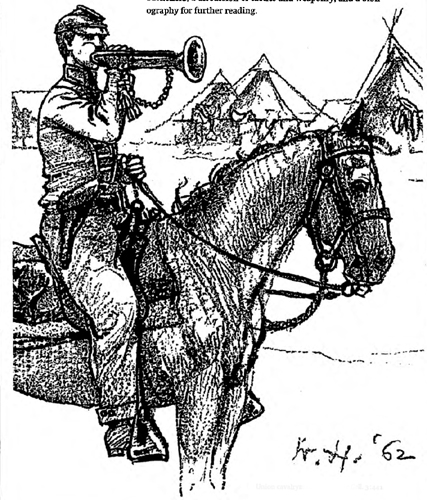
Union cavalryman the water call, 3:441
How to Use This Guide
This book is divided into 20 main stops, proceeding from one part of the battlefield to another in chronological order. That is, the tour follows the battle as it progressed, from the morning of July 1 through the afternoon of July 3. Most stops require about 10 to 15 minutes to complete. A few, such as Little Round Top and the High Water Mark of Picketts Charge, take a bit longer. It takes about six hours to complete the entire tour. Only a few stops require people to walk more than 50 yards from their cars; those that do give optional directions for those whose mobility is limited.
Next page
